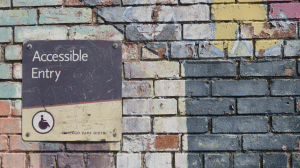Late last year, Investopedia released a list of the top 10 most searched terms on its site in 2017. It’s filled with some predictable mentions (like bitcoin), some happy surprises (like impact investing), and rounds out with millennials.
After a relatively uncertain and tumultuous 2017 (following a relatively uncertain and tumultuous 2016), the Investopedia list is a good reminder of the need to look to the future. Trends change, and they can helpfully inform what we should think about next.
The millennial generation — often used to reference individuals born between the early 1980s and 2000s — now represents the largest swath of decision-makers in the U.S. Last year, the Pew Research Center declared that the number of millennials had officially overtaken the previously dominant baby boomers, representing 75.4 million of the U.S. population.
Like it or not, millennials are a part of that future. Millennials will make up the largest share of our workforce, shape consumption behavior, and, in some contexts, represent the most passionate investors. So let’s work with them, not against them.
Much has been written about the “typical millennial.” While criticisms of a group of people are predictably guilty of over-generalization and exaggeration, they also are influenced by a series of events that are unique in our shared global history. To ignore them is to paint an inaccurate picture of a generation dealing with a confluence of factors that are new and untested. Here are some of the most trying lamentations, which deserve a little more critical thinking.
“They don’t know how to socialize because they are always on their phones.”
This particular generation is typically marked by increased familiarity with digital and communication technology. In fact, some people suggest that the millennial generation should not be identified by age, but rather where individuals land based on the internet revolution.
Some say that the commercial popularization of the internet in the mid-’90s should really be the dividing line between two types of millennials: old and young. For the old millennials, technology was a later-stage lifestyle disruption. For the young millennials, it has been around since the beginning—not just as a tool to connect, but to make meaningful change. This is an important distinction — that for some millennials, “always on their phone” also can mean always doing something.
“They don’t know how to handle their money.”
The Great Recession deeply changed perceptions around so many economic “assurances.” Wisdom passed down through generations on safe and thoughtful ways to build financial independence was debunked for many middle-class U.S. families. For some, it proved that financial peril can touch you even when you’ve graduated with a college degree, and that human beings who are so-called financial experts can make some of the worst decisions.
Some millennials watched family members lose their lifelong savings and homes after heeding bad financial advice. They are rightly skeptical of blanket wisdom to “put your money in a 401(k),” “go to college to protect yourself,” and “buy a home for financial security.” And it shows. In the U.S., college enrollment declined for a fifth straight year. A decrease in housing affordability (and lifestyle changes) means that millennial home ownership is at a record low.
This criticism could be true, but it’s based on outdated assurances of financial health and wealth — ones that the millennial generation have seen firsthand to be flawed.
“They have no clue what it’s like to work hard.”
And what good are retirement goals or the dream of fully paid assisted living when the road is paved with debt? In the U.S., student loan debt accounts for $1.4 trillion, spread out across more than 44 million borrowers, many of whom are millennials. And why do millennials have so much of it? Well, that sought-after middle-class lifestyle isn’t quite as cheap as it used to be. When baby boomers were young, a college education wasn’t necessary to enter the middle class.
In the late ’70s, a high school graduate earned 77 percent of what a college graduate made. And the boomers who did go to college had little student loan debt, thanks to predominantly public-funded universities and academic institutions. Today, that same high school diploma will provide 62 percent of what a college graduate earns.
Gone also is the promise of a reasonable rate of debt-free living — at least as previous generations enjoyed. A typical millennial averaged earnings of $33,000 between 2009 and 2013 — the lowest since 1980.
As college-degree incomes decrease, employer demand for college degrees is only increasing. Based on a 2016 survey, 37 percent of companies say they hire college graduates for positions previously held by people with only high school degrees, and 26 percent hire people with master’s degrees for jobs that used to go to those with bachelor’s degrees.
No wonder some millennials choose to live with their parents longer, marry later, and abstain from having children — what good is that 9–5 tradition if it gets you half as close to your goals with double the amount of effort?
“They’re entitled.”
To say that millennials have a “distaste for hard work” combined with “a deep sense of entitlement” is just too simple. In many ways, millennials are the first generation that is contending — en masse — with the bizarre reality of income-generation from a knowledge-based economy. Per hour labor is an increasingly antiquated way of assigning value to work.
Knowledge-based workers are expected to use analytical skills, strategic problem solving, and a team-based approach for the task at hand. Consequently, multiple studies observe that the shift in the type of work also will mean a shift in perceived job satisfaction. For many millennials, that means seeking out workplaces where there is “a free flow of information, strong connectivity to supervisors, and more immediate feedback.” Consistent criticism that millennials can’t seem to “roll up their sleeves” persists, even as the norms around work change.
The sheer size of the millennial generation — and their position of power as the largest subset of future employees, consumers, and savers — makes how we work with them desperately critical.
The argument is not that unproductive social and societal behaviors don’t exist within the millennial generation. They certainly do, and they have in every generation prior. Racism, classism, and political idealism have reared their head within the millennial subset, seen across the latest U.S. presidential election, riots in Virginia, and other pockets of activity where young people have made the headlines.
The argument instead is neither to disparage nor deify this generation. Instead, let’s invest in training, educating, and onboarding a generation of individuals dealing with a historically unprecedented level of confusion and change. Here a few ideas on how we might do this.
Derision is not the way — education is.
History has made clear that marginalizing a particular group of people is a surefire way to create deep-seated animosity — animosity that will exist long after we do. By 2020, half of the U.S. workforce will be made up of millennials. The U.S. economy continues to rely on consumers — and family-based consumption — as an indicator of national economic health and wealth. Little good will come from disenfranchising not only the largest share of U.S. laborers, but also consumers, trend-setters, and, hopefully, savers.
If those employees-turned consumers continue to be stymied by debt, many developed economies will not be able to weather the storm.
We can look for ways that existing institutions and communities can help bridge that individual wealth gap.
Take financial literacy, for example. In the U.S., we continue to lack systemic financial education that will enable individuals to understand how to save, invest, manage debt, and protect their credit. In Ontario, for example, financial literacy has been making its way into high school curriculums since 2011 and includes topics like how to take out a loan, what terms make sense for you, and what to do to protect your virtual financial identity.
If we have a generation of native tech users, let’s use ’em.
So much of our future innovation will be rooted in technology and technological innovation. Innovations in how we drive, use energy, educate the world, and clean our planet are just some of the areas that technological sorcery will take us from 0 to 60.
If the millennial generation is indeed marked by a coming of age during a technological revolution — and evolution — then let’s harness that power. Let’s use these native tech speakers to help bring about the solutions to our most systemic challenges. Let’s use that technological fluency to build the right solutions, think deeply about the unintended consequences of technology, and potentially create the quality of life that so many generations prior have been steadily working toward.
A rising tide lifts all boats.
It is expected that over the next 30 to 40 years, $30 trillion in assets will pass from boomers to their heirs — many of whom are millennials. Combined with the income-generating potential of an overwhelmingly millennial employee base, the investment potential of this generation could be unparalleled. And how that capital is used is changing in real-time. Millennial consumers are more likely to pay more for “socially responsible” products, pursue impact-oriented careers, and use their voice to punish poor corporate offenders.
Corporate responsibility, social dynamism, and long-term thinking across sectors will be a requirement to generate dollars from these values-demanding consumers and spenders. And in turn, those shifts could change the way we think about how that capital is used to support people and planet.
As we look toward the future, let’s make a commitment. No more articles titled “Millennials are the worst” or “My millennial’s smartphone ruined our family dinner.” No more conferences where audience members generically lament about the pervasive laziness of anyone under the age of 37. Let’s endeavor to do our small part to onboard a generation of individuals who could create some of the most innovative solutions to some of our most complex problems — smartphones in hand.
A version of this article originally appeared on B the Change. Read more stories of people using business as a force for good in B the Change, or sign up to receive the B the Change Weekly newsletter for more stories like the one above, delivered straight to your inbox.










